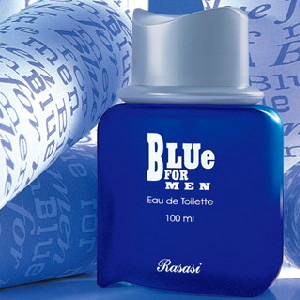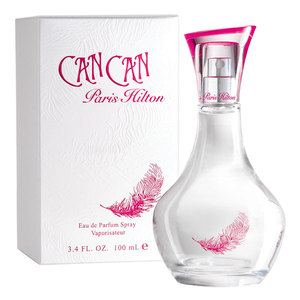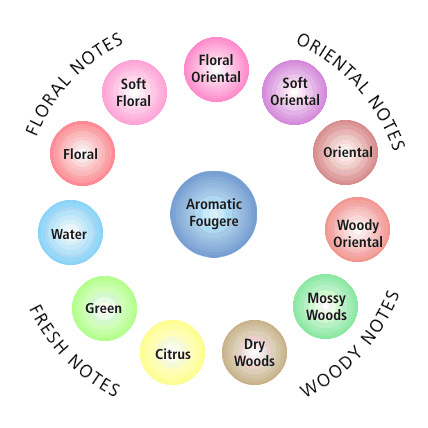
Sunday, February 28, 2010
Thursday, February 25, 2010
Aquí tenéis una imagen del frasco y el envase del perfume, todo rosita y delicadas líneas curvas. Muy chic, fresco y juvenil; todo por 44€.

Tuesday, February 23, 2010
Fragrant extracts
Although fragrant extracts are known to the general public as the generic term "essential oils", a more specific language is used in the fragrance industry to describe the source, purity, and technique used to obtain a particular fragrant extract.
Of these extracts, only absolutes, essential oils, and tinctures are directly used to formulate perfumes.
- Absolute: Fragrant materials that are purified from a pommade or concrete by soaking them in ethanol. By using a slightly hydrophiliccompound such as ethanol, most of the fragrant compounds from the waxy source materials can be extracted without dissolving any of the fragrantless waxy molecules. Absolutes are usually found in the form of an oily liquid.
- Concrete: Fragrant materials that have been extracted from raw materials through solvent extraction using volatile hydrocarbons. Concretes usually contain a large amount of wax due to the ease in which the solvents dissolve various hydrophobic compounds. As such concretes are usually further purified through distillation or ethanol based solvent extraction. Concretes are typically either waxy or resinous solids or thick oily liquids.
- Essential oil: Fragrant materials that have been extracted from a source material directly through distillation or expression and obtained in the form of an oily liquid. Oils extracted through expression are sometimes called expression oils.
- Pomade: A fragrant mass of solid fat created from the enfleurage process, in which odorous compounds in raw materials are adsorbed into animal fats. Pommades are found in the form of an oily and sticky solid.
- Tincture: Fragrant materials produced by directly soaking and infusing raw materials in ethanol. Tinctures are typically thin liquids. [7]
Products from different extraction methods are known under different names even though their starting materials are the same. For instance, orange blossoms from Citrus aurantium that have undergone solvent extraction produces "orange blossom absolute" but that which have been steam distilled is known as "neroli oil".
[edit]Composing perfumes
Perfume compositions are an important part of many industries ranging from the luxury goods sectors, food services industries, to manufacturers of various household chemicals. The purpose of using perfume or fragrance compositions in these industries is to affect customers through their sense of smell and entice them into purchasing the perfume or perfumed product. As such there is significant interest in producing a perfume formulation that people will find aesthetically pleasing.
[edit]The perfumer
The job of composing perfumes that will sell is left up to an expert on perfume composition or known in the fragrance industry as the perfumer. They are also sometimes referred to affectionately as a "Nez" (French for nose) due to their fine sense of smell and skill in smell composition.
The composition of a perfume typically begins with a brief by the perfumer's employer or an outside customer. The customers to the perfumer or their employers, are typically fashion houses or large corporations of various industries. The perfumer will then go through the process of blending multiple perfume mixtures and sell the formulation to the customer, often with modifications of the composition of the perfume.
The perfume composition will then be either used to enhance another product as a functional fragrance (shampoos, make-up, detergents, carinteriors, etc.), or marketed and sold directly to the public as a fine fragrance.[6]
[edit]Technique
Although there is no single "correct" technique for the formulation of a perfume, there are general guidelines as to how a perfume can be constructed from a concept. Although many ingredients do not contribute to the smell of a perfume, many perfumes include colorants and anti-oxidants to improve the marketability and shelf life of the perfume, respectively.
[edit]Basic framework
Perfume oils usually contain tens to hundreds of ingredients and these are typically organized in a perfume for the specific role they will play. These ingredients can be roughly grouped into four groups:
- Primary scents: Can consist of one or a few main ingredients for a certain concept, such as "rose". Alternatively, multiple ingredients can be used together to create an "abstract" primary scent that does not bear a resemblance to a natural ingredient. For instance, jasmine and rose scents are commonly blends for abstract floral fragrances. Cola flavourant is a good example of an abstract primary scent.
- Modifiers: These ingredients alter the primary scent to give the perfume a certain desired character: for instance, fruit esters may be included in a floral primary to create a fruity floral; calone and citrus scents can be added to create a "fresher" floral. The cherry scent in cherry cola can be considered a modifier.
- Blenders: A large group of ingredients that smooth out the transitions of a perfume between different "layers" or bases. Common blending ingredients include linalool and hydroxycitronellal.
- Fixatives: Used to support the primary scent by bolstering it. Many resins and wood scents, and amber bases are used as fixatives.
The top, middle, and base notes of a fragrance may have separate primary scents and supporting ingredients. The perfume's fragrance oils are then blended with ethyl alcohol and water, aged in tanks for several weeks and filtered through processing equipment to, respectively allow the perfume ingredients in the mixture to stabilize and to remove any sediment and particles before the solution can be filled into the perfume bottles[13].
Fragrance notes
Perfume is described in a musical metaphor as having three sets of 'notes', making the harmonious scent accord. The notes unfold over time, with the immediate impression of the top note leading to the deeper middle notes, and the base notes gradually appearing as the final stage. These notes are created carefully with knowledge of the evaporation process of the perfume.
- Top notes: The scents that are perceived immediately on application of a perfume. Top notes consist of small, light molecules that evaporate quickly. They form a person's initial impression of a perfume and thus are very important in the selling of a perfume. Also called the head notes.
- Middle notes: The scent of a perfume that emerges just prior to when the top notes dissipate. The middle note compounds form the "heart" or main body of a perfume and act to mask the often unpleasant initial impression of base notes, which become more pleasant with time. They are also called the "heart notes".
- Base notes: The scent of a perfume that appears close to the departure of the middle notes. The base and middle notes together are the main theme of a perfume. Base notes bring depth and solidity to a perfume. Compounds of this class of scents are typically rich and "deep" and are usually not perceived until 30 minutes after application.
The scents in the top and middle notes are influenced by the base notes, as well the scents of the base notes will be altered by the type of fragrance materials used as middle notes. Manufacturers of perfumes usually publish perfume notes and typically they present it as fragrance pyramid, with the components listed in imaginative and abstract terms.
[edit]Olfactive families
Grouping perfumes, like any taxonomy, can never be a completely objective or final process. Many fragrances contain aspects of different families. Even a perfume designated as "single flower", however subtle, will have undertones of other aromatics. "True" unitary scents can rarely be found in perfumes as it requires the perfume to exist only as a singular aromatic material.
Classification by olfactive family is a starting point for a description of a perfume, but it cannot by itself denote the specific characteristic of that perfume.
[edit]Traditional
The traditional classification which emerged around 1900 comprised the following categories:
- Single Floral: Fragrances that are dominated by a scent from one particular flower; in French called a soliflore. (e.g. Serge Lutens' Sa Majeste La Rose, which is dominated by rose.)
- Floral Bouquet: Is a combination of fragrance of several flowers in a perfume compound e.g. Attar Majmua & Fancy Boquet etc.
- Amber: A large fragrance class featuring the sweet slightly animalic scents of ambergris or labdanum, often combined with vanilla, flowers and woods. Can be enhanced by camphorous oils and incense resins, which bring to mind Victorian era imagery of the Middle East and Far East.
- Wood: Fragrances that are dominated by woody scents, typically of agarwood, sandalwood and cedarwood. Patchouli, with itscamphoraceous smell, is commonly found in these perfumes.
- Leather: A family of fragrances which features the scents of honey, tobacco, wood and wood tars in its middle or base notes and a scent that alludes to leather.
- Chypre: Meaning Cyprus in French, this includes fragrances built on a similar accord consisting of bergamot, oakmoss, patchouli, andlabdanum. This family of fragrances is named after a perfume by François Coty. A notable example is Mitsouko (a popular name for girls inJapanese) by Guerlain.
- Fougère: Meaning Fern in French, built on a base of lavender, coumarin and oakmoss. Houbigant's Fougère Royale pioneered the use of this base. Many men's fragrances belong to this family of fragrances, which is characterized by its sharp herbaceous and woody scent.
[edit]Modern
Since 1945, due to great advances in the technology of perfume creation (i.e., compound design and synthesis) as well as the natural development of styles and tastes; new categories have emerged to describe modern scents:
- Bright Floral: combining the traditional Single Floral & Floral Bouquet categories.
- Green: a lighter and more modern interpretation of the Chypre type, with pronounced cut grass and cucumber-like scents
- Aquatic, Oceanic, or Ozonic: the newest category in perfume history, appearing in 1991 with Christian Dior's Dune. A very clean, modern smell leading to many of the modern androgynous perfumes. Generally contains calone, a synthetic scent discovered in 1966. Also used to accent floral, oriental, and woody fragrances.
- Citrus: An old fragrance family that until recently consisted mainly of "freshening" eau de colognes, due to the low tenacity of citrus scents. Development of newer fragrance compounds has allowed for the creation of primarily citrus fragrances.
- Fruity: featuring the aromas of fruits other than citrus, such as peach, cassis (black currant), mango, passion fruit, and others.
- Gourmand: scents with "edible" or "dessert"-like qualities. These often contain notes like vanilla, tonka bean and coumarin, as well as synthetic components designed to resemble food flavors. An example is Thierry Mugler's Angel.
[edit]Fragrance wheel
The Fragrance wheel is a relatively new classification method that is widely used in retail and in the fragrance industry. The method was created in 1983 by Michael Edwards, a consultant in the perfume industry, who designed his own scheme of fragrance classification.The new scheme was created in order to simplify fragrance classification and naming scheme, as well as to show the relationships between each of the individual classes[9].
The five standard families consist of Floral, Oriental, Woody, Fougère, and Fresh, with the former four families being more "classic" while the latter consisting of newer bright and clean smelling citrus and oceanic fragrances that have arrived due to improvements in fragrance technology. Each of the families are in turn divided into sub-groups and arranged around a wheel.
[edit]Aromatics sources
[edit]Plant sources
Plants have long been used in perfumery as a source of essential oils and aroma compounds. These aromatics are usually secondary metabolites produced by plants as protection against herbivores, infections, as well as to attract pollinators. Plants are by far the largest source of fragrant compounds used in perfumery. The sources of these compounds may be derived from various parts of a plant. A plant can offer more than one source of aromatics, for instance the aerial portions and seeds of coriander have remarkably different odors from each other. Orange leaves, blossoms, and fruit zest are the respective sources ofpetitgrain, neroli, and orange oils.
- Bark: Commonly used barks includes cinnamon and cascarilla. The fragrant oil in sassafras root bark is also used either directly or purified for its main constituent, safrole, which is used in the synthesis of other fragrant compounds.
- Flowers and blossoms: Undoubtedly the largest source of aromatics. Includes the flowers of several species of rose and jasmine, as well as osmanthus, plumeria, mimosa, tuberose, narcissus, scented geranium, cassie, ambrette as well as the blossoms of citrus and ylang-ylang trees. Although not traditionally thought of as a flower, the unopened flower buds of the clove are also commonly used. Most orchid flowers are not commercially used to produce essential oils or absolutes, except in the case of vanilla, an orchid, which must be pollinated first and made into seed pods before use in perfumery.
- Fruits: Fresh fruits such as apples, strawberries, cherries unfortunately do not yield the expected odors when extracted; if such fragrance notes are found in a perfume, they are synthetic. Notable exceptions include litsea cubeba, vanilla, and juniper berry. The most commonly used fruits yield their aromatics from the rind; they include citrus such as oranges, lemons, and limes. Although grapefruit rind is still used for aromatics, more and more commercially used grapefruit aromatics are artificially synthesized since the natural aromatic contains sulfurand its degradation product is quite unpleasant in smell.
- Leaves and twigs: Commonly used for perfumery are lavender leaf, patchouli, sage, violets, rosemary, and citrus leaves. Sometimes leaves are valued for the "green" smell they bring to perfumes, examples of this include hay and tomato leaf.
- Resins: Valued since antiquity, resins have been widely used in incense and perfumery. Highly fragrant and antiseptic resins and resin-containing perfumes have been used by many cultures as medicines for a large variety of ailments. Commonly used resins in perfumery include labdanum, frankincense/olibanum, myrrh, Peru balsam, gum benzoin. Pine and fir resins are a particularly valued source of terpenesused in the organic synthesis of many other synthetic or naturally occurring aromatic compounds. Some of what is called amber and copalin perfumery today is the resinous secretion of fossil conifers.
- Roots, rhizomes and bulbs: Commonly used terrestrial portions in perfumery include iris rhizomes, vetiver roots, various rhizomes of theginger family.
- Seeds: Commonly used seeds include tonka bean, carrot seed, coriander, caraway, cocoa, nutmeg, mace, cardamom, and anise.
- Woods: Highly important in providing the base notes to a perfume, wood oils and distillates are indispensable in perfumery. Commonly used woods include sandalwood, rosewood, agarwood, birch, cedar, juniper, and pine. These are used in the form of macerations or dry-distilled (rectified) forms.













